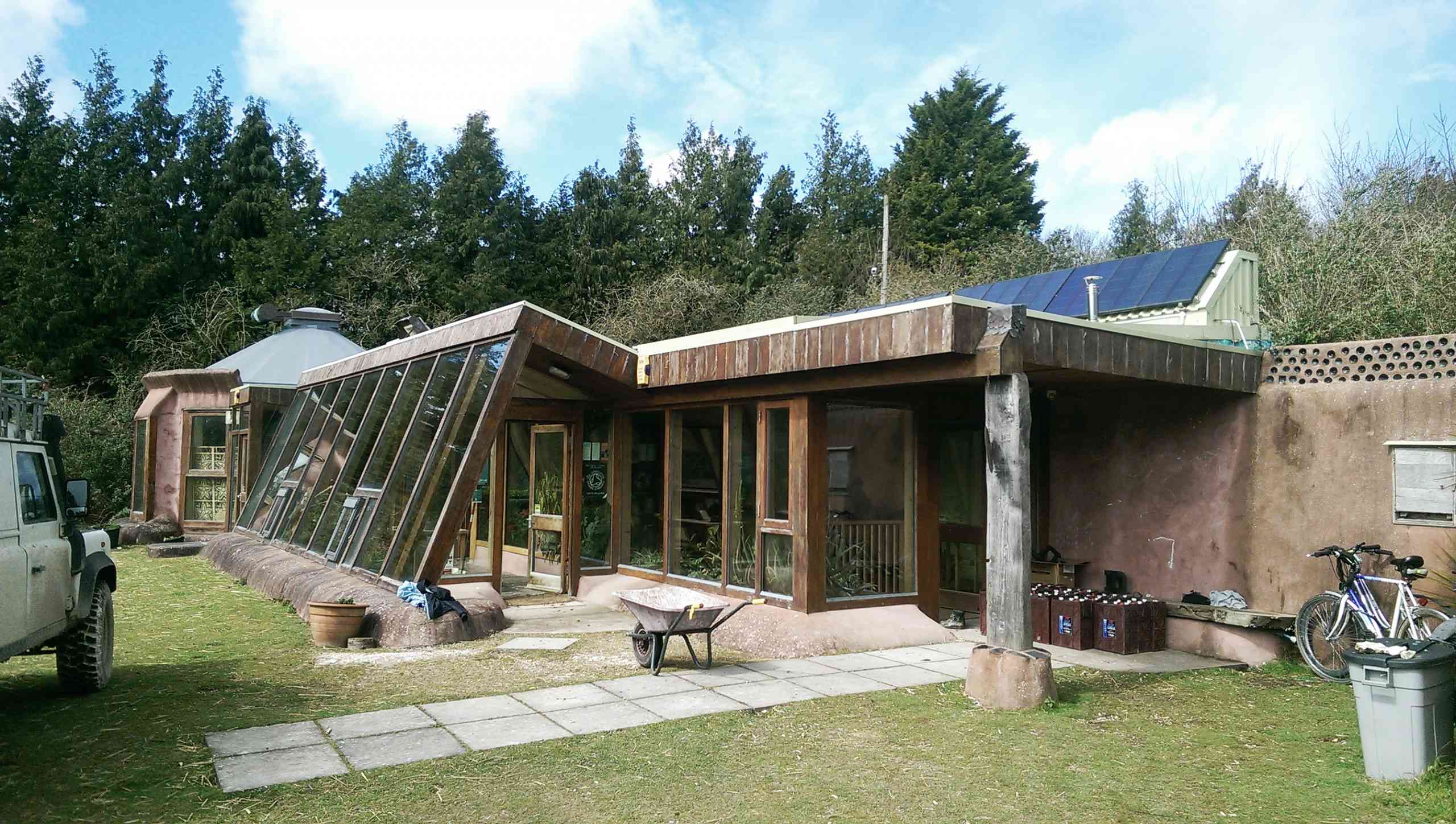Introduction
In a world grappling with environmental challenges and a growing need for sustainable living, Earthship homes have emerged as a unique and innovative solution. These eco-friendly, self-sustaining dwellings, also known as Earthship Biotecture, offer an alternative to conventional housing by utilising recycled materials and renewable energy sources. In this article, we will explore Earthship homes, their key features, and the advantages and challenges associated with this sustainable living option.
Earthship home above is by Earthship home architect, Taus, architect in Bristol on Design for Me. See his full profile and shortlist him for your self-build here.
What is an Earthship home?
An Earthship home is a type of passive solar house that integrates natural and recycled materials to create a self-sustaining and off-grid living environment. Developed by architect Michael Reynolds in the 1970s, Earthship homes are designed to reduce their environmental impact and promote a harmonious relationship between humans and nature.
Key Features of Earthship Homes
- Sustainable building materials Earthships are constructed primarily using recycled materials such as used tires, glass bottles, aluminium cans, and reclaimed wood. These materials are readily available, inexpensive, and help reduce waste.
- Thermal mass Earthship homes use thermal mass to regulate indoor temperatures. The walls are typically made from rammed earth or adobe, which absorb heat during the day and release it at night, creating a stable and comfortable indoor climate.
- Passive solar design The architecture of Earthship homes incorporates large south-facing windows to maximise solar heat gain in the winter. This passive solar design reduces the need for artificial heating and cooling.
- Renewable energy Earthships often incorporate renewable energy systems such as solar panels and wind turbines to generate electricity. These homes aim to be off-grid or have minimal reliance on traditional power sources.
- Water harvesting and treatment Earthships collect rainwater for domestic use, which is then filtered and purified for drinking. Greywater recycling systems further reduce water waste, making these homes highly efficient in water management.
- Food production Some Earthships feature greenhouse-like structures called “hugelkultur” beds where residents can grow their own food year-round. This adds to the self-sustaining nature of these homes.
Advantages of Earthship Homes
- Sustainability Earthship homes are a shining example of sustainable architecture, utilising recycled materials and renewable energy sources to minimise their environmental footprint.
- Cost-efficiency Building an Earthship can be cost-effective in the long run, as they often require fewer utility bills due to their off-grid capabilities.
- Self-sufficiency Earthships empower homeowners to be self-sufficient by providing their own water, energy, and food production.
- Minimal environmental impact The use of recycled materials and sustainable building techniques reduces the demand for new resources and helps decrease landfill waste.
- Resilience earthship homes are designed to withstand extreme weather conditions and natural disasters, making them a resilient housing option.
Challenges with Earthship Homes
- Initial cost While Earthships can be cost-effective in the long term, their upfront construction costs can be higher than traditional homes due to the specialised design and materials.
- Building codes and regulations In some regions, Earthship construction may face statutory challenges, making it difficult for homeowners to build these homes under traditional planning and building regulation legislation.
- Specialised knowledge Constructing and maintaining an Earthship requires a certain level of expertise and knowledge, which may not be readily available to everyone.
- Limited aesthetic variety Earthship homes have a distinctive appearance, which may not appeal to those seeking more conventional architectural styles.
- Adaptability earthships may not be suitable for all climates, as their passive solar design is most effective in areas with ample sunlight and temperature fluctuations.
Conclusion
Earthship homes offer a compelling solution for those looking to embrace sustainable living and reduce their environmental impact. With their self-sufficiency, energy efficiency, and minimal environmental footprint, these unique dwellings have garnered attention as a viable alternative to traditional housing. However, they also come with challenges related to cost, regulations, and specialised knowledge. Ultimately, Earthship homes are an innovative and environmentally friendly housing option for those willing to embrace a more sustainable lifestyle.
Who are we?
Design for Me is a free platform to help you quickly find the right design professional for your home project. We’d recommend posting your project on Design for Me to see who shows interest and has knowledge of sustainable architecture.
Once you register your project, we’ll match it with 100s of top architects or interior designers in your area and beyond, and you can see who may be available and eager to work on your project straight away.
- Quickly see who’s interested in your job.
- Create a shortlist.
- Invite up to three for a no-obligation consultation.
Emily Design for Me


